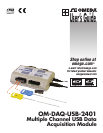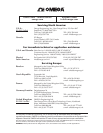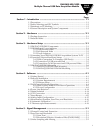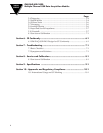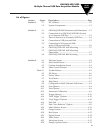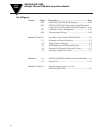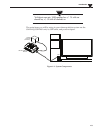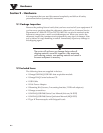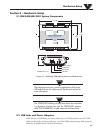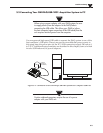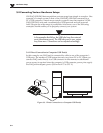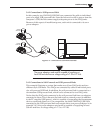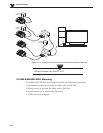
When using OM-DAQ-USB-2401 unit to acquire data,
computer energy save modes can cause false data readings.
Prior to using the unit, ensure your computer’s energy save
mode is disabled. If needed, consult your PC user’s manual to
disable energy save (power suspension) modes.
1.2 Safety Warnings and IEC Symbols
This device is marked with international safety and hazard symbols in
accordance with IEC standards. It is important to read and follow all precautions
and instructions in this manual before operating or commissioning this device as
it contains important information relating to safety and EMC. Failure to follow
all safety precautions may result in injury and or damage to your device. Use of
this device in a manner not specified will void your warranty.
IEC symbols Description
Caution, refer to accompanying documentation
EU’s Waste Electrical and Electronic Equipment
Compliance
Figure 1-1. IEC Symbols
1.3 Statement on CE Marking
It is the policy of OMEGA
®
to comply with all worldwide safety and EMI/EMC
regulations that apply. OMEGA is constantly pursuing certification of its
products to the European New Approach Directives. OMEGA will add the CE
mark to every appropriate device upon certification. For additional information
see Section 10 - Approvals & Regulatory Compliance.
1.4 General Description & System Components
The OM-DAQ-USB-2401 is a USB 2.0 full speed thermocouple/voltage input
data acquisition module (fully compatible with both USB 1.1 and USB 2.0 ports).
This stand-alone module draws power from the USB port to operate. An external
(optional) power supply can be used. All configurable options (including
individual channel input type and range) are software programmable.
The OM-DAQ-USB-2401 has user programmable voltage inputs that range from
±30 mV to ±10V, full scale. The compact, modular packaging ensures ease of use
in a variety of applications. Units can be DIN rail or wall mounted with the
included hardware or easily operated on a bench. All analog input channels can
be measured sequentially at about 1 ms per channel. A total of 1000 samples per
second can be taken, divided across all active channels.*
Introduction
1
1-2
NOTE:



